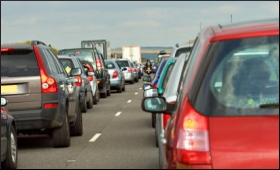|
|
|

|
Commodity inflation for auto sector to be offset by price hikes
|
|

|
|
| Top Stories |
 |
|
|
|
SME Times News Bureau | 12 Jan, 2021
The automobiles sector is expected to face commodity cost inflation
which will be offset by price hikes, lower discounts, cost cutting, and
operating leverage, according to a report by Motilal Oswal Institutional
Equities.
The report said spot prices of base commodities saw a
sharp increase (15-40 per cent) over 2QFY21. "Considering 3-6 month
contracts, we expect the impact of base commodity prices to reflect in
the P&L from 3QFY21 onwards. Base commodity price inflation would
have a 350-400bp gross impact over the next 2-3 quarters," the report
said.
Precious metals (platinum, palladium and rhodium) are
facing a double whammy of a huge increase in usage due to BS-VI
compliance and a sharp rise in prices. This is particularly true for
rhodium where spot prices are higher by 28 per cent/70 per cent over
1HFY21/FY20 on an average.
While cost inflation is fairly large,
OEMs are focusing on more than offsetting the same through price
increases (of 1-6 per cent in 2Ws, Tractors, and PVs), lower discounts
(100-400bp across segments), cost cutting (80-100bp), and operating
leverage (150-170bp).
"Putting all negatives and positives
together, we expect EBITDA margin to improve to 13.3 per cent by FY23E
(v/s 10.5 per cent in FY20 and 12.7 per cent in FY19) as the impact of
commodity cost inflation is more than offset by benefits of price
increases, lower discounts, cost cutting initiatives, and operating
leverage," the report said.
With a likely pick-up in volumes
(higher asset turns), margin improvement, and lower capex intensity, the
brokerage expects a sharp improvement in FCF generation over FY21-23E.
"For our Auto OEM (excluding JLR) universe, FCF conversion (percentage
of PAT) is estimated to be at 100-125 per cent over FY21-23E (as against
20 per cent/33 per cent in FY20/FY19)," it said.
Analysis of
past cycles suggests that valuations expand as the cyclical recovery
sustains, laying the foundation for the next upcycle. Current valuations
reflect an early to mid-cycle recovery, with scope for a further rise
if the volume expansion sustains.
|
|
|
| |
|
|
|
|
|
|
|
|
|
|
|
|
|
|
| |
| Customs Exchange Rates |
| Currency |
Import |
Export |
US Dollar
|
₹88.70
|
₹87 |
UK Pound
|
₹119.90
|
₹116 |
Euro
|
₹104.25
|
₹100.65 |
| Japanese
Yen |
₹59.20 |
₹57.30 |
| As on 30 Oct, 2025 |
|
|
| Daily Poll |
 |
 |
| Who do you think will benefit more from the India - UK FTA in the long run?
|
|
|
|
|
|
| Commented Stories |
 |
|
|
|
|
|
| |
|